TOPIC: DIGITAL SINGLE-LENS REFLEX CAMERA
A Look at a Compact System Camera
4th September 2013In August, I acquired an Olympus Pen E-PL5, and I'm still getting used to it. Its main appeal was combining SLR functionality with compact camera size. This was an upgrade from my Canon PowerShot G11 without the bulk of a larger camera.
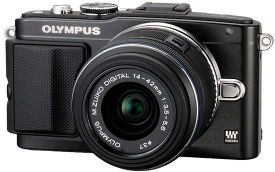
When I considered Canon's EOS M before choosing the E-PL5, I was put off by its slow autofocus. The lack of a mode dial was another concern, though its APS-C sensor and price of around £399 were attractive (and I liked Canon's tendency to overexpose when examining images from an old Canon EOS 10D). After seeing a camera comparison in Practical Photography, I bought that issue. They preferred the similarly priced Olympus Pen E-PM2 over the Canon. Though a Panasonic won the test, I was interested enough in the Olympus to research further. Unlike the E-PM2 and EOS M, the E-PL5 has both a mode dial and extra grip, so I chose it despite the higher price. I had noticed discounted Olympus Pen models before, but this purchase was a more deliberate investment.
Breaking my usual preference for black cameras for variety's sake, I chose the silver E-PL5 from the three available colours (black, silver and white). The body is very compact, with the lens taking up most of the bulk. The standard 14-42 mm zoom means this isn't a shirt-pocket camera, so I bought a black Lowepro Apex 100 AW case. The case fits the camera snugly, making me wonder if I should have chosen a larger one, but it's working well. To protect the lens during outings, I also added a 37 mm Hoya HMC UV filter. The lens's plastic construction extends further than I expected and doesn't fully retract into its housing like some of my Sigma lenses.
On my first test run, I needed to work out how to hold the camera. My Canon PowerShot G11's powered zoom and autofocus made it more intuitive to hold, as was true for any SLR I've used. Holding the small body while adjusting the zoom lens was awkward at first. Eventually, I learned to steady the body with my right thumb (the curved thumb grip on the back holds a thumb vertically) while freely adjusting the lens with my left hand. An electronic viewfinder instead of the screen would have made things easier, but they're expensive, and I had already spent enough.
After learning to hold the camera, I needed to adjust to its exposure characteristics. From my experience, it tends to overexpose. Though I set it to store raw (ORF) files that can be fixed later, I prefer more control during capture. Also, I haven't found a spot or partial metering button like those on my SLR or G11. This means either using exposure compensation with aperture priority mode or switching to fully manual exposure. Other familiar modes are available (shutter priority, program, automatic, etc.). While getting familiar with the camera, I'm using bracketing after setting ISO to 400, increasing screen brightness and adding histograms to playback views. As my grip becomes more secure, I'm using the dial to adjust settings like aperture (f/16 remains my favourite despite what others think about micro four thirds sensor size) and compensation, keeping scenes consistent to test the camera's response to changes.
Though I'm still learning, I'm seeing pleasing results that encourage me to continue; some remind me of my Pentax K10D. The E-PL5 is slower to use than the G11, but that's often beneficial for photography. Being forced to slow down in our hectic world is another advantage. The G11 is seeing less use now, with sunny days offering chances for more experimentation and familiarisation. My introduction to compact system cameras has shown they're very different from compact fixed lens cameras or SLRs. Neither type is truly replaced; instead, a new category has emerged.
A display of brand loyalty
12th July 2013Since 2007, I've used a Pentax K10D DSLR as my main camera. It has travelled with me extensively, capturing over 15,000 images and serving reliably. Though its autofocus isn't the fastest, this doesn't matter for my typical subjects: landscapes, architecture, flora and transport (stationary buses and trains, for instance). Any slight underexposure in photos can be easily fixed since I shoot in DNG format, which preserves all raw image data. The camera has performed so well that I've found it difficult to justify buying a new SLR.
Lately, I have been looking at processed photos and asking myself if time has moved along for what is not far from being a six-year-old camera. At various times, I have been looking at higher members of the Pentax while wondering if an upgrade would be a good idea. First, there was the K7 and then the K5 before the K5 II got launched. Even though its predecessor is still to be found on sale, it was the newer model that became my choice.
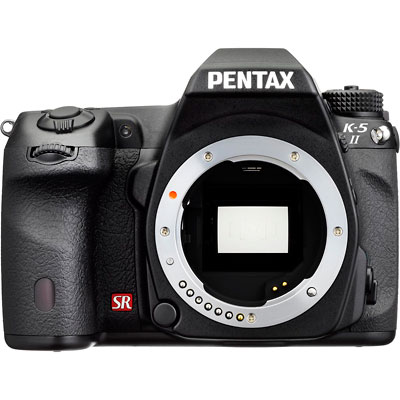
My move to Pentax in 2007 was a case of brand disloyalty, since I had been a Canon user from when I acquired my first SLR, an EOS 300. Even now, I still have a PowerShot G11 that finds itself slipped into a pocket on many a time. Nevertheless, I find that Canon images feel a little washed out before post-processing, and that hasn't been the case with the K10D. In fact, I have been hearing good things about Nikon cameras delivering punchy results, so one of them would be a contender were it not for how well the Pentax performed.
So, what has my new K5 II body gained me that I didn't have before? For one thing, the autofocus is a major improvement on that in the K10D. It may not stop me persevering with manual focusing for most of the time, but there are occasions the option of solid autofocus is good to have. Other advances include a 16.3 megapixel sensor with a much larger ISO range. The advances in sensor technology since when the K10D appeared may give me better quality photos, and noise is something that my eyes may have begun to detect in K10D photos even at my usual ISO of 400.
Some features will not get used, though. While I rely on Live View with my PowerShot G11 due to its poor optical viewfinder, I rarely use it on the K5 II with its bright, sharp viewfinder, especially after noticing unreliable autofocus when using it (though manual focusing should work fine). By default, the screen stays on constantly, which irritated me as an optical viewfinder user, so I consulted the manual to turn it off. Similarly, I quickly abandoned the image level display. However, I've kept the horizon autocorrection feature enabled, as it helps fix the crooked horizons that often result from handheld shooting.
The K5 II may have a 3" screen on its back, but it has done nothing to increase the size of the camera. If anything, it is smaller than the K10D, and that usefully means that I am not on the lookout for a new camera holster. Not having a bigger body also means there is little change in how the much camera feels in the hand compared with the older one.
In many ways, the K5 II works very like the K10D once I took control over settings that didn't suit me. Both have Shake Reduction in their camera bodies, though the setting has been moved into the settings menu in the new camera, when the older one had a separate switch on its body. Since I'd be inclined to leave it on all the time and prefer not to have it knocked off accidentally, this is not an issue. Otherwise, many of the various switches are in the same places, so it's not that difficult to find my way around them.
The K5 II includes other changes, like a mode dial lock, but I'm familiar with this feature from Canon EOS cameras, so it doesn't feel like a downgrade. The exposure compensation button has been relocated to the top of the camera, making it easier to find and use; I'm using it more than I did on the K10D. Since I also use this feature on my G11, I'm applying similar experimentation to the K5 II. Next to it is a new ISO button, which I plan to test to see how it performs.
My main criticism of the K5 II is its cluttered menu system. The K10D's long scrollable lists have been replaced with multiple tabs that eliminate on-screen scrolling. However, I think this fragments the interface too much and makes navigating settings more intimidating for less technical users. Essential settings remain accessible; I continue using RAW DNG files as usual, though JPEG and Pentax's proprietary RAW format are also available. After initially forgetting to set the date, I quickly fixed this. Similarly, I disabled the default setting that stores files in date-based folders, instead directing everything to a single PENTX directory to match my workflow. Recently, I discovered the option to add photographer and copyright information to image file metadata. This seems particularly useful given proposed U.K. legislation that would weaken automatic copyright protections, even though most photographers oppose these legal changes.
A camera's true value lies in the quality of its images, and I'm pleased with what the K5 II produces. The larger file sizes mean fewer images fit on a memory card, though increased SDHC capacities help offset this, even as I avoid excessive shooting. While using the camera, I was surprised to find apertures like F/14 and F/18, as I was used to values like F/11, F/13, F/16, F/19, and F/22. Most traditional values remain available, so there's not a complete departure from convention. Similarly with shutter speeds, I noticed 1/100 and 1/160 where I expected only 1/90, 1/125, and 1/250. These additional options provide more flexibility and potentially make achieving correct exposures easier, though what constitutes "correct" should be determined by the photographer, not the camera's algorithms. So far, I've mostly used ISO 400, except for some evening woodland testing shortly after getting the camera.
While I've been meaning to share my thoughts on the K5 II since acquiring it a few months ago, I needed time to organize my ideas. Initially, I felt overwhelmed by how much there was to say, even more than what you've read here. There are still features to explore, like white balance adjustments and their effect on image quality. After discovering its shake reduction was switched off, I'm also reconsidering my K10D, especially since this might explain the quality issues I mentioned earlier. Using my tripod more consistently would be another improvement. Clearly, I have many more photographic explorations ahead.
Dispensing with temptation as new cameras keep getting launched
26th January 2012Many manufacturers followed Olympus into the compact system camera market. Nikon joined late last year, though Canon hasn't yet entered. Olympus E-PL1 kits with 14-42mm zoom lenses tempted me at around £250. After researching competitors, my shortlist included the Samsung NX-11, Sony NEX-C3, and its higher-end model, the NEX-5N.
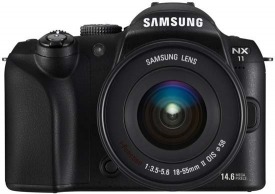
What eventually countered the allure of shiny objects was the question as to why I needed such an item. After all, I already possess a Pentax K10D DSLR and a Canon PowerShot G11, and these have been satisfying my photographic needs for a while now. While the DSLR may date from 2007, it is still working well for me and, if it ever needed replacing, I'd be going for another Pentax with the K-5 being a strong contender. The Canon is doing what's asked of it, so the recent launching of the G1 X isn't so tempting either.
The whole dalliance has me wondering about how photographic equipment changeovers come about. After all, it was around a decade ago with the DSLR revolution was in the offing if not in progress. Until then, film photography was predominant, but it looks as if it got as far as it could from a technological point of view when I look back at what happened. The digital photography area was new and untapped, so moving there offered new possibilities and purchases more easily justified. The result is that very few film cameras are being made nowadays. Ironically, it's film photography that now is untrammelled terrain for many, and it is holding its own too in an era when digital photography predominates.
The same sort of newness that came with digital photography also applies to CSC's to a certain extent. From the heritage of half-frame 35 mm film photography, Olympus has fashioned a different type of digital camera: essentially a compact with interchangeable lenses. Was it the fact that I have no CSC that caused me to be tempted, and has it happened to others too? Also, is that what got digital photography going in the first place?
It almost feels as if camera manufacturers have to keep bringing to market new models and new types of camera to stay in business. After all, Minolta had to sell its camera division to Sony when they failed to get going in the DSLR market quickly enough. The same thing might have happened to Pentax too, with the marque passing to first to Hoya, and then to Ricoh after the firm lost its independence.
What doesn't help is the lack of longevity of camera models. The coming of digital photography has exacerbated this situation, with models being launched at a frenetic rate. In the days of film photography, a model could last on the market for a few years and there was once a time when a twenty-year lifetime wouldn't have looked so ridiculous, though there were incremental improvements made over that time too. For instance, a Pentax K1000 wouldn't be the same at the end of its production run as it was at the start, though the model number may be the same. That world is gone.
SLR design has endured for about 50 years, but mirrorless technology now presents unprecedented competition. Even compact cameras offer live through-the-lens viewing. Olympus revived its film heritage by creating the E-P1 with interchangeable lenses. These descendants of the original half-frame 35mm PEN cameras appropriately use smaller micro four thirds sensors. Sony has developed translucent mirror technology that eliminates moving parts found in traditional SLRs. Canon experimented with this in the 1980's with film cameras but abandoned it. Meanwhile, Samsung and Panasonic produce mirrorless SLR-style cameras with live viewing and electronic viewfinders, suggesting full-size equivalents may be coming. Olympus's current teaser campaign has sparked speculation about a possible OM-D release.

In parallel with all this, Sony is making a good impression with their CSC's, the NEX series. These have APS-C sized sensors like many DSLR's and in compact bodies as well. However, the feel very much is that of a compact camera and some have complained of a like of buttons on them, even if the photographic quality is excellent. Samsung have gone for the same sensor size in their NX-11, while they have gone for SLR styling. That may be more suitable for some than having to find settings buried in menus.
We're living in an exciting yet unsettling period of camera technology evolution. Cameras are becoming smaller, and traditional still cameras now shoot videos too, though filmmaking remains a time-intensive hobby that doesn't interest me. Recent legal developments complicate original work, as shown by a successful copyright case based on Photoshop image processing. With countless images being created daily and potential changes allowing intellectual property claims in small claims courts, avoiding infringement becomes harder. Film photography seems appealing in contrast and remains viable despite Kodak's financial struggles. As tastes shift and film becomes novel again, the future is uncertain. Perhaps investing in a DSLR body makes sense before Compact System Cameras completely replace them. Camera technology has become interesting once more.
All that was needed was a trip to a local shop
5th March 2011In the end, I did take the plunge and acquired a Sigma 50-200 mm f4-5.6 DC OS HSM lens to fit my ever faithful Pentax K10D. After surveying a few online retailers, I plumped for Park Cameras, where the total cost, including delivery, came to something to around £125. This was around £50 less than what others were quoting for the same lens, with delivery costs yet to be added. Though the price was good from Park Cameras, I was wondering still about how they could manage to do that sort of deal when others don't. Interestingly, it appears that the original price of the lens was around £300, but that may have been at launch and prices do seem to tumble after that point in the life of many products of an electrical or electronic nature.
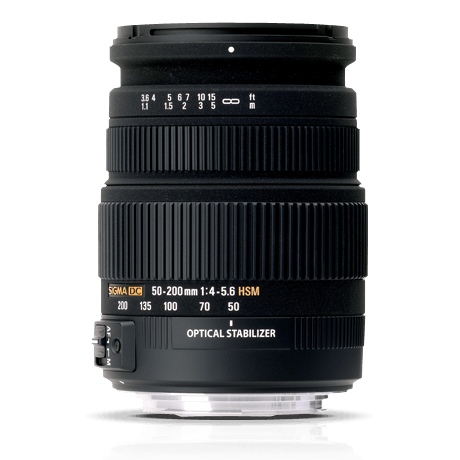 Unlike the last lens that I bought from them around two years ago, delivery of this item was a prompt affair, with dispatch coming the day after my order and delivery on the morning after that. All in all, that's the kind of service that I like to get. On opening the box, I was surprised to find that the lens came with a hood but without a cap. However, that was dislodged slightly from my mind when I remembered that I neglected to order a UV or skylight filter to screw into the 55 mm in front of it. In the event, it was the lack of a lens cap needed sorting more than the lack of a filter.
Unlike the last lens that I bought from them around two years ago, delivery of this item was a prompt affair, with dispatch coming the day after my order and delivery on the morning after that. All in all, that's the kind of service that I like to get. On opening the box, I was surprised to find that the lens came with a hood but without a cap. However, that was dislodged slightly from my mind when I remembered that I neglected to order a UV or skylight filter to screw into the 55 mm in front of it. In the event, it was the lack of a lens cap needed sorting more than the lack of a filter.
The result was that I popped into the local branch of Wildings where I found the requisite lens cap for £3.99 and asked about a filter while I was at it. Much to my satisfaction, there was a UV filter that matched my needs in stock though it was that cheap at £18.99 and was made by a company of which I hadn't heard before, Massa. This was another example of good service when the shop attendant juggled two customers, a gentleman looking at buying a DSLR and I. While I would not have wanted to disturb another sales interaction, I suppose that my wanting to complete a relatively quick purchase was what got me the attention while the other customer was left to look over a camera, something that I am sure he would have wanted to do anyway. After all, who wouldn't?
With the extras acquired, I attached them to the front of the lens and carried out a short test (with the cap removed, of course). When it was pointed at an easy subject, the autofocus worked quickly and quietly. A misty hillside had the lens hunting so much that turning to manual focussing was needed a few times to work around something understandable. Like the 18-125 mm Sigma lens that I already had, the manual focussing ring is generously proportioned with a hyperfocal scale on it, though some might think the action a little loose. In my experience, though, it seems no worse than the 18-125 mm, so I can live with it.
Both lenses share something else in common in the form of the zoom lens having a stiffer action than the focus ring. However, the zoom lock of the 18-125 mm is replaced by an OS (Optical Stabilisation) one on the 50-200 mm and the latter has no macro facility either, another feature of the shorter lens though it remains one that I cannot ever remember using. In summary, first impressions are good, but I plan to continue appraising it. Maybe an outing somewhere tomorrow might offer a good opportunity for using it a little more to get more of a feeling for its performance.
A tendency for overexposure?
14th July 2010A recent trip to Sweden saw my Canon PowerShot G11 being put to rather more use than was expected. If I had known what might have been coming my way, I may even have eschewed the principle of lightweight packing to bring along my Pentax DSLR. Nevertheless, the little Canon did whatever was asked of it when light was plentiful.
Once thing that I have noticed in comparison with the Pentax is the Canon's tendency to overexpose a scene. To a point, this can be explained by the former having proper spot-metering and the latter having the less specific partial metering. In fact, that might explain why a Canon EOS 10D SLR in my possession has the same tendency. Maybe it's time to make more use of the Sekonic light meter that I have, but that adds bulk that doesn't fit in with the idea of carrying a compact camera around with you.
That leaves getting more practice with exposure corrections at processing time (I do capture all my photos in raw format). Going further, I am finding that the same consideration appears to apply to image sharpening too. It's almost as if you need to develop a feeling for the results produced by a camera before satisfaction with any acquired photos will follow. Having decent lighting at capture time and not having muck on the sensor helps too, as I have discovered with the photos made used my Pentax K10D on a recent visit to Arran and Argyll. The state of the sensor needs sorting (even if it has an anti-dust system on board) but I sometimes wonder if my judgement of lighting is what it used to be or whether my aspirations have gone too high. Maybe I need to slow down a little to set aside time for working on getting better results and with the right light, a quantity that should come with autumn and winter. Meanwhile, I'll stick with making the best of the British summer.
Canon PowerShot G11 first impressions and initial thoughts
16th January 2010Back in the early days of this blog, I mulled over the idea of having a high-end digital compact camera to complement a DSLR that then was delivering very dusty images; that Canon EOS 10D was cleaned since then and comes in for occasional use to this day. That was nearly three years ago, and a first generation Ricoh GR Digital was the item that then was catching my eye. At the time, I failed to justify spending that much money on such a thing and ended up acquiring a new Pentax K10D DSLR instead. The question that rattled about my head was this: what was the point of spending DSLR money on a compact camera? It is one that never really went away and comes to mind when you see the prices of interchangeable lens compacts like Olympus' Pen and equivalent offerings from Panasonic and Ricoh (there, it's interchangeable lens units rather than actual lenses).
The strongest counterpoint to the cost conundrum is the little matter of size. SLR (film or digital) cameras are sizeable things, and there is a place for having something that drops into a pocket. It is that which has propelled me into taking delivery of a Canon PowerShot G11. It may need a good-sized pocket but, unless you are going out with no jacket, it shouldn't be a problem most of the time. For those shorter sorties when I don't fancy bringing an SLR out, it is well-built and looks the business, though some acclimatisation is to make the best of the knobs, buttons and menus. Nevertheless, the included manual will help with this process (there's a paper quick start guide and more detailed documentation on CD).
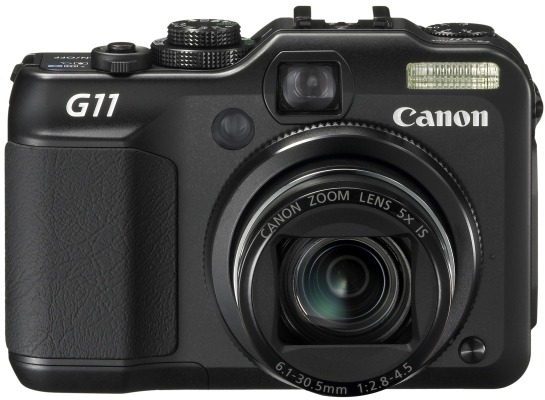
The camera hasn't seen extensive use just yet, so here are a few early impressions. Firstly, there's the matter of size: it's even smaller than the first camera that I ever bought (more than fifteen years ago) and that was a Ricoh 35 mm compact film camera. That comparison is even more striking when you consider the feature sets. The Ricoh was a fixed 35 mm lens affair with things like date and time stamping, ISO choice and a nod towards scenic mode selection. In contrast, the much newer Canon is loaded with the sorts of things that normally are found almost exclusively on SLR's, starting with its effective 28-140 mm focal length range.
Exposure modes such as manual, aperture priority and shutter priority complement scene-based modes and another for movies (not a concern of mine, it has to be said). As if that weren't enough, there's exposure compensation too. It came as a surprise to me to find a form of manual focussing included, though it is not as convenient as turning a focussing ring on a lens. While you can see the inbuilt flash above, there's also a hot shoe and a place to attach a tripod too. Settings like white balance and file format are accessed using the Function/Set button, with the lever underneath the shutter release button controlling the focal length of the lens. In addition, there's also image stabilisation, and that's important when you're using live view to compose a photo. Spot metering and focal point selection are other things that find their way into the package. Some may be excited by other things, but exposure and focussing are essential for any photographic efforts.
An optical viewfinder is included, and it has diopter settings too, but my first impressions are that live view through the rear screen trumps it and I see no need for such things on SLR's. That also flips out from the camera body and can be rotated either for self-portraiture or for folding back in on the camera body for use like a non-articulated screen. Another use is with those occasions when the subject means holding the camera in positions that would be impossible with a conventional screen; holding the camera over your head or down low on the ground are the sorts of situations that come to mind.
Of course, there's more there than those features that I have listed, and the specifications on the Canon website are as good a place to start as any. So far, my only testing has taken the form of cursory checks and to make sure that the thing works properly. Still, this has given me more of a feel for the camera and how it operates. As you'd expect, high ISO settings are noisy, only for a bigger surprise to be that the smallest aperture setting is f/8. Being used to SLR's, I was expecting to get the likes of f/16 on there, but a spot of internet investigation indicated that I should have been taking the size of the sensor into account with my expectations. Any trials so far have been in dull weather, so I'd need to use it in a wider variety of conditions before giving it the sort of wider appraisal that you'd find in the likes of Outdoor Photography (who liked it, it has to be said). For what it's worth, I have found no major criticism so far, though I cannot see it usurping my SLR's not as if that ever was the intention anyway.
Temptations, temptations...
19th August 2009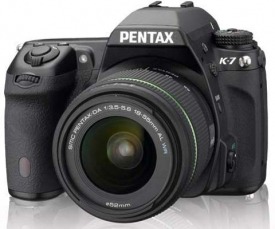
The last time that I went out and bought a new camera was over two years ago, and I am minded not to make another purchase for a while. Apart from damage to the battery cover arising from a fall, my Pentax K10D has survived so far without a problem and I admit to being satisfied with the photos that it makes. Following a professional sensor clean, my Canon EOS 10D has been pressed into service over the past few months, too. Meanwhile, 6 and 10 megapixel sensors generate nowhere near the attention that might have been the case a few years back, but that's by the by. In fact, the megapixel race seems to have stalled, with features like video being added to photographic cameras over the last year and live screens coming to prominence as well. Neither would make me rush out to buy a new DSLR anyway, perhaps because having things the old way suits me just fine and megapixel counts never ever moved me in the first place either.
That's never to say that the likes of Pentax's K-7 or Canon's EOS 50D and 5D Mark II don't capture my attention with their promises of better quality. However, with things the way that they are in the world, I am more likely to retain my cash or maybe invest in new photo processing software for making the most of what I already have. Ideas for photography projects creep into my head when I get to looking over my online photo gallery and realise that not have my tastes changed, while my photographic eye has developed too. That seeing of things in a new light may mean that old subjects get revisited, and I don't need a new camera to do that.
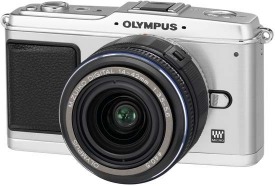
High-end compact cameras such as Canon's G11 and Ricoh's GR Digital III do detain attention for a while but a brief look at their prices proves that you really got to need the portability and I never can justify the outlay when a DSLR will do all that I want from it, and perhaps even for less money. While I admit to pondering the purchase of a GR Digital to cover for the EOS 10D while it was away for cleaning, the Pentax came to be acquired when I realised that the versatility of a DSLR was too much to lose, even for a while. Olympus' E-P1 may have bridged the gap, but the old question of going miniature for the price of a full sized article recurs.
All in all, I am going to stick with what I have right now. We are coming to a time of year when things appear more golden and that combination of lighting and colour are what really matters, not how many megapixels are in your camera sensor unless you are making large prints or supplying stock libraries. As long as my cameras continue to deliver pleasing results, I'll stick with elevating my skills and taking my time over that task, even with all the announcements of new cameras at various exhibitions and shows.
Another avalanche of new DSLR’s…
24th January 2008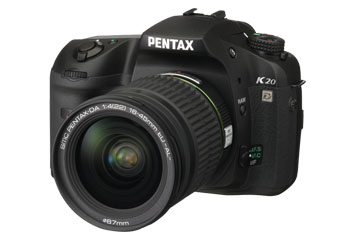
A flurry of new DSLR announcements came out today; they seem to come in droves when they do arrive, but I reckon that upcoming photography shows might have something to do with it. Canon replaced its entry-level offering with the 12.2 megapixel EOS 450D. Yes, I know that megapixels aren't everything, yet a goodly number does make a rather good impression and Canon's range looks a bit lop-sided again with the entry level DSLR on the surface of it having the potential for recording more detail than the next one up in their range, the EOS 40D. It almost seems that it would have been more sensible to delay the arrival of that camera until after the 450D and give enthusiasts a really impressive option.
As it stands, they might end up playing into the hands of Nikon with its D300, a strong contender if I were in the market looking for a DSLR. Pentax displays no such idiosyncrasies with its 10.2 megapixel K200D and its 14.6 megapixel K20D, while Samsung has also presented their variant of the latter: the GX200. It will be interesting to see reports of how all of these new arrivals perform. Launches like this do not take long to make your once shiny acquisitions look dated, and that fate certainly seems to have befallen my K10D. For some reason, that reminds me that my trusty old EOS 10D needs to be sent away for cleaning, a job that has been on the to-do list for a while.
More digital than film?
26th October 2007Despite the rampant progress of digital photography, I have continued to stick with film and sit astride the fence. While that is something that I wish to continue, my most recent trips into the outdoors have seen me use my Pentax K10D exclusively. That, however, could be something to do with the subject matter.
My most recent trot took me into what might be described as featureless moorland, a tricky subject to capture in the best way. So, possibly because of the lesser likelihood of success, I stuck with digital since any lack of success costs less. Previous trips took me out and about locally where I live and where I seem more likely to use digital, possibly because I have been around the area a lot with my film camera anyway. Also, the vistas, as pleasant as they are, do not possess the drama of the likes of Highland Scotland, the English Lake District, or the mountainous parts of North Wales.
A rake of new cameras
30th August 2007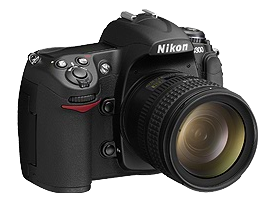 The websites of Amateur Photographer and Tech.co.uk are good places to find out what is happening in the world of digital cameras, which is just as well given the recent camera launching frenzy. It all seemed to start off with Canon's EOS D40 and EOS 1Ds Mark III.
The websites of Amateur Photographer and Tech.co.uk are good places to find out what is happening in the world of digital cameras, which is just as well given the recent camera launching frenzy. It all seemed to start off with Canon's EOS D40 and EOS 1Ds Mark III.
Even if the former seemed to be a case of playing catch up, I still think that Canon should have used the opportunity to pull ahead, at least in the megapixel stakes; Sony is working on a 12 megapixel offering and could be about cause of 12 megapixel sensors becoming the norm for consumer digital SLR's like they did with the 10 megapixel level. While I realise that megapixels aren't everything, it has seemed to go like that thus far. Playing catch up doesn't apply to the 1Ds Mark III given its having a monster sensor resolution of 21 megapixels and, needless to say, the improvements to the favoured DSLR of landscape photographers don't stop there.
Nikon were also in the fray with new 12 MP offerings: D300 for the enthusiast and D3 for the professional. The sensor in the latter interestingly features a sensor that sits between full frame and the more usual APS-C sizes. Panasonic has also announced a new DSLR, while a number of manufacturers have new digital compacts on the market too. All the previous makers have something, as does Olympus. It was astonishing to see this all happening at once, yet I suppose that's how it goes. Though IFA has been on over the last week, some launches preceded this; it's usually something big like Photokina that results in this sort of thing...
Update: I have discovered since the Nikon's D3 has a sensor sized in the full frame domain. It might be 36mmx23.9mm rather than 36mmx24mm, but the FX format comes extremely close and the advent of full frame DSLR's being purveyed by a number of manufacturers may be upon us.